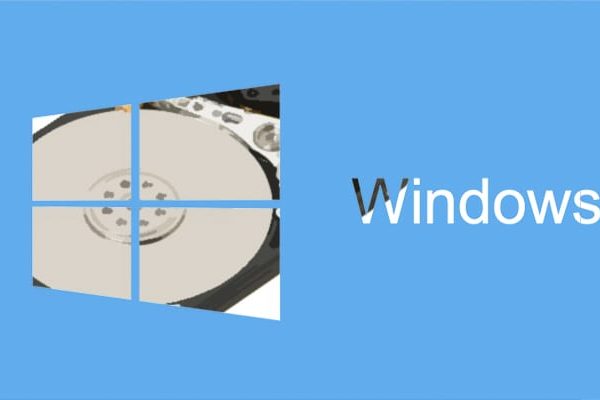The term ad exchange (ad exchange) refers to online marketplaces, where advertising space is traded and auctioned. Publishers (web operators and blogs) offer ad space for monetization. Merchants (advertisers, sellers, and ad networks) can purchase this ad space to place their advertising material such as banners, rich media, and video ads.
The sale is based on an automated procedure that calculates the price of advertising space and inventory in real time based on supply and demand. This is known as real-time bidding or real-time trade promotion. The principle is similar to an auction: Merchants can bid on ad space with a specified number of ad impressions. The advertising material belonging to the highest bidder is then displayed for printing.

History
Advertising exchanges arose as a result of the development of the advertising market: As more and more ad networks entered the market, the commercial promotion procedure became increasingly complex and confusing. There were more offers than customers. Different ad networks partially sold ad space to each other when they had no one else to sell it to. One of them also referred to the campaigns called "Run on Network" to describe that additional space.
This resulted in higher commissions for each ad network, longer time intervals between sales of an ad space, and greater complexity in the sales process. This, in turn, led to the development of markets that brought together the various ad networks and, at the same time, provided a central access point for advertisers and publishers. Using technologies, such as real-time bidding, which is still used by Google in paid search, ad exchanges became auction rooms that optimized prices for publishers (performance optimization) and gave advertisers access to different providers of advertising space.
Functionality
An ad exchange platform is simply a collection of ad impressions. Publishers enter their inventory into the system in the form of prints. For this case, the provider uses a system that then connects to another subsystem known as a demand-side platform (DSP). If a user visits a web portal that has a certain number of advertising spaces, a communication is initiated between the provider (SSP) and the buyer (DSP) to display an appropriate advertisement. This only takes a few milliseconds, and the user doesn't notice anything.
Merchants or advertisers thus opt for specific impressions, which they can buy in a next step. Technically speaking, they acquire them before with the specification of the different criteria that the system checks before the ad is shown. For this, they use the platform on the demand side. This exchanges different types of information with the platform on the supply side, for example the content category for the ad space, user identification by impression or other targeting and retargeting data. The DSP checks the criteria and determines which marketing promotion is the most suitable for the target group and thus would have the highest success rate.
The DSP then presents the advertising space offers. The single shared platform receives these offers and determines the highest bidder. The respective advertisement is in turn displayed on the web portal visited by the user. The real-time bidding procedure should take only a few milliseconds to show the ad to the user as quickly as possible. On average, only about 100 milliseconds elapse between the first part and the last part of the communication.[1]
Advantages Disadvantages
Unlike ad networks, ad exchange does not deal with the ad space packaged on a variety of websites that is outside of the merchant's control. It carries scalable values such as ad impressions or CPM (cost per thousand). Here, the merchant can opt for a specific advertising inventory. A commercial promotion inventory refers to the values that are used as the basis for calculating the price of a certain publisher. In most cases, individual impressions are used as a base.
Hence, ad sharing increases transparency: Ad space pricing is directly related to the calculated [reach] of the platform in the form of impressions or similar key performance indicators (KPIs). At the same time, these values are calculated in real time. The price of an advertising space is determined in milliseconds, so the interest groups give a minimum and maximum price, on the one hand, and algorithms are used for the calculation, on the other. These algorithms link suppliers with buyers and determine the auction price through technical consultations. [2]
Under certain conditions, the algorithms also contain segmentation strategies. This allows for different approaches that have a direct impact on potential bidding strategies. As a result, different bidding strategies may emerge, depending on the definition of the target group and its availability.
One option:
- Pre-targeting: It consists of proposing different criteria for the preselection of the offer in real time. Parts of the commercial promotion inventory, mobile devices, countries and languages can be included or omitted.
- Audience segmentation: Various attributes, such as sociodemographic data or users' search intentions, are used to tailor the ad to the target group.
- Contextual targeting: Here, the goal is to adapt the content of the ad to the context - the web portal.
- Semantic segmentation: Context adapts to other data, such as frequently used search terms or search trends.
- Social segmentation and CRM: User profiles in social networks are used as a database, like customer databases in a CRM system.
- Retargeting: When a user visits a website multiple times, the ad content is optimized accordingly for the second time.
Examples of ad exchange providers
- Double click on Ad Exchange (Google).
- Microsoft Advertising Exchange.
- Right Media Exchange (Yahoo).
- OpenX.
- The Rubicon Project.
- AppNexus.
Importance for online marketing
Ad exchanges are real-time business promotion players. It is a trend that is gradually replacing traditional display marketing in the United States. Since ad exchanges represent a certain development of ad networks, they offer publishers the highest possible return on blog and website monetization. They are also profitable for merchants and advertisers: Thanks to the different targeting options, the ads can be tailored directly to the different target groups and the offers of the advertising spaces are optimized.
This provides companies with new commercial promotion options, especially when combined with different technologies such as RTB and apps from the Big Data field (for example, data management platforms, finally, DMPs). Regardless, these complex relationships require experience and curiosity about digital media.
Web Links


![35 Best Marketing Strategies for Companies [Concept and Examples]](https://rmarketingdigital.com/wp-content/uploads/2020/11/mejores-estrategias-de-marketing-empresas-02-1-9467828-600x320.png)



